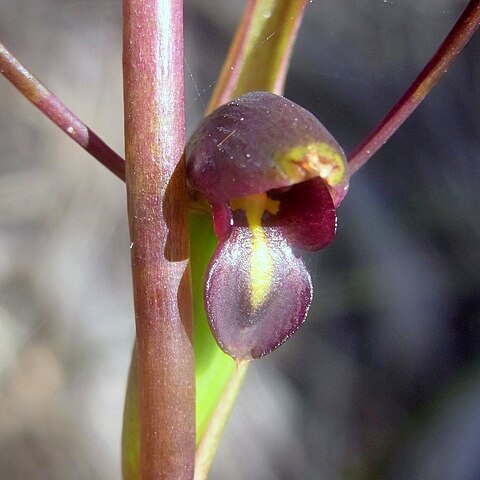Leaves 2–5, in an erect tuft, 150–300 × 2–3 mm, grass-like, channelled. Flower stem 300–600 mm, rigid, yellowish or blackish, 1–9-flowered. Flowers 8–10 mm across, usually brownish or blackish, occasionally yellowish green or completely black apart from labellum. Dorsal sepal projected forwards, deeply concave, 9–12 × 8–10 mm, strongly hooded over column. Lateral sepals erect, outcurved or spreading, terete to terete-spathulate and horn-like, 20–25 × 1 mm, margins strongly incurved or inrolled. Petals hidden within dorsal sepal, 4–5 × 2–3 mm, tips blunt or notched. Labellum 10–12 mm long, 3-lobed; lateral lobes 5–6 × 1.5 mm; midlobe strongly recurved, 4.5–6 × 4–5 mm, with prominent yellow central patch, margins incurved. Column 4.5–5.5 × 3–4 mm; column wings narrow, papillate.
A ground orchid. It grows 30-60 cm high. There are 2-5 leaves. These are narrow, like threads. They are 15-30 cm long by 2-3 mm wide. They occur in a tuft near the base. They are bright green and have a channel. The flowering stalk is 60 cm tall. It is stiff and bears 1-9 flowers. The flowers are 1 cm across and yellowish-green or dark brown.

